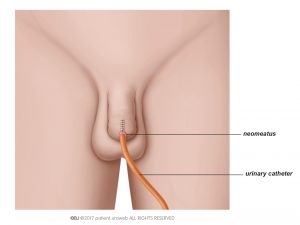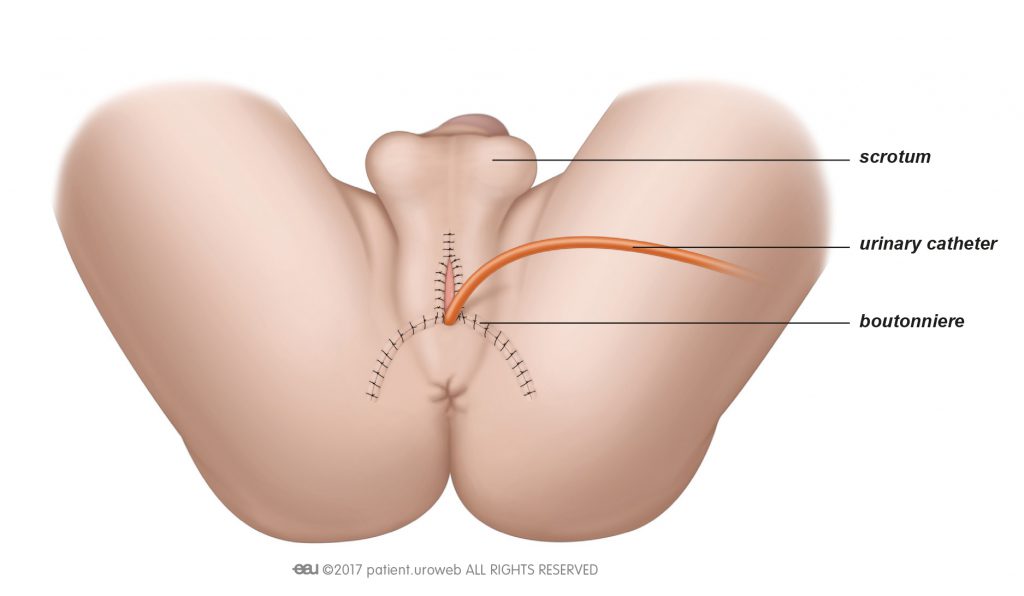Partial urethrectomy
Partial urethrectomy: If your cancer is limited to the part of the urethra nearest the opening, but still close to the tip, partial removal of the urethra (urethrectomy) with penile preservation may be the best option. Your doctor might also recommend removal of enlarged lymph nodes to rule out metastasis.
The main goal of the procedure is complete removal of the tumour with a wide safety margin to make sure no tumour is left behind. For a tumour near the opening of the urethra, the surgeon will remove the affected part and create a new opening (a neomeatus) (Fig. 1). The urethra will end underneath your penis rather than at the tip. You will have to sit down to urinate. The procedure is carried out under general anaesthesia, so you will be unconscious and unaware of what is happening to you.
If the tumour has progressed or the urethra cannot be moved to create a neomeatus at the penile shaft, your doctor may have to create an opening for the urethra at your perineum, between the scrotum and the anus. This opening is called a boutonniere (Fig. 2). Again, you will have to sit down to urinate.
Partial or complete penile amputation
Depending on the tumour location and the involvement of adjacent tissue, the penis may have to be
removed partially or completely. and the urethral opening will need to be relocated.
- Partial penectomy: If the tumour is located at the tip of the penis.
- Radical penectomy: If the tumour is located in the part of the urethra close to the bladder, partial removal of the urethra may not be possible. In this case, your doctor will have to recommend complete removal of the penis.
In the rare case that your surgeon cannot remove enough tissue for safety, surgical removal of the urinary bladder may become necessary, with construction of new way to store and regulate the flow of urine (urinary diversion). After surgery, you would have a drainage tube and a catheter to drain urine and wound fluid.



